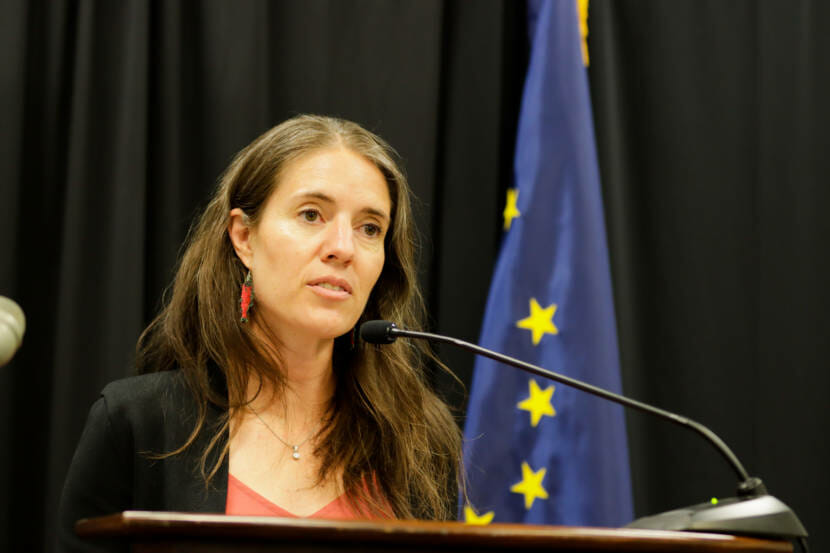
The vast majority of cases of COVID-19 in Alaska this week are from the rapidly spreading omicron strain, state health leaders said on Thursday.
They said that over the past five days, between 80% and 95% of cases screened by the state public health lab have had a marker associated with omicron.
State Chief Medical Officer Dr. Anne Zink said there has been a significant increase in cases over the past 24 hours.
“It’s pretty clear that omicron is here and spreading quickly across the state of Alaska,” she said.
State leaders expect to report a large increase in the total number of COVID-19 cases statewide on Friday.
Despite the increase in cases, hospitalizations have not gone up. Zink said hospitals’ biggest problem is staff members becoming sick with the virus.
“We’ve been seeing nationally, as well as internationally, not the same rate of hospitalization and severe illness with omicron as we did with delta, but still in many states an increase as cases so quickly increase, so we’ll continue to follow and watch this closely moving forward,” she said.
Zink said that at the same time cases are increasing, the amount of monoclonal antibodies allocated by the federal government to Alaska has dropped.
“We are very limited in our supplies at this time, with significant demand,” she said.
The state is changing how it’s reporting COVID-19 data. It will be emphasizing weekly changes, rather than daily numbers. In addition, state officials said that hospitalization and death statistics are more accurate than case counts.
Zink said public health officials around the world are discussing what information is most useful, especially as more people have had the disease and have been vaccinated against it.
“We will see more people who have mild or asymptomatic disease who are not ending up at the hospital and are not ending up overwhelming our health care systems,” she said. “And that is kind of the natural progression through a pandemic, as this has less and less impact on the population as a whole.”
State Epidemiologist Dr. Joe McLaughlin is tracking how omicron has spread in other parts of the world. In the first place where there’s data — South Africa — cases peaked less than three weeks after they first started to spread rapidly, then fell quickly. McLaughlin expressed hope that the omicron wave of infections will be shorter than previous waves of the disease.



